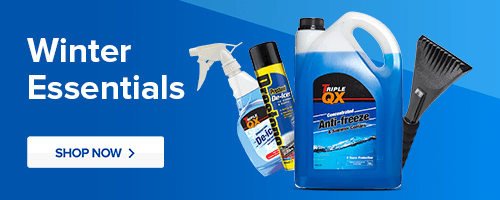When travelling on any road, knowing your vehicle’s stopping distance is vital for
safe driving. As the autumn and winter weather draws in, road conditions can
drastically alter overnight. With that in mind, it is vital to check how well
your brakes are performing, in case you need to suddenly stop on uneven
surfaces.
In this guide, we will explain how much stopping distance can increase in icy
conditions, as well as some tips for checks you can carry out on your brakes to
help you drive safer. To help you get prepared for drives during the colder
weather, see our wide range of winter essentials.
What Is Stopping Distance?
A big part of the practical and theory driving tests, stopping distance is the
combined thinking and braking distance you give yourself when driving on the
roads.
Driving faster decreases your stopping distance, while driving slower or slowing down increases it. Getting too close to the cars in front of you (also known as ‘tailgating’) also decreases stopping distance and if you don’t stop in time, can cause an accident.
Three car lengths is the advised stopping distance when you are driving along a dry road. When the road conditions change however, like when they become icy, this affects your stopping distance.
Stopping Distance In Icy Conditions
Driving safely on icy roads is imperative for you
and other people. Not only does it drastically affect the speed you can drive
at, but also your overall stopping distance. Stopping distance in icy
conditions increases ten times the amount it does to stop on a dry road. To put
it into perspective, driving at 70mph could take you 800m to fully slow down
your car!
As icy conditions increase during autumn and winter, checking your brakes are working correctly is a must before the freezing weather draws in.
Brake Check Tips For Icy Conditions
As stopping time in icy conditions can be very unpredictable, there are some things
you can do to make sure your brakes are working correctly:
- Check your brake
fluid levels are at the correct amount. If it looks lower than it should be,
you will need to change your
brake fluid. - The winter weather can
cause your car to make different noises. If you notice that your car is
squeaking when you are applying your
brakes, you may need to replace your brake pads. - As road conditions
become icier and you are stopping more, your brakes may begin to feel soft or
spongy. If this happens, it could be that you need to
bleed your brakes.
Stopping distance on ice is one of many things you need to consider when driving during the winter. Another factor to consider is decreased visibility; take a look at our guide which takes you through when to use your dipped headlights.
